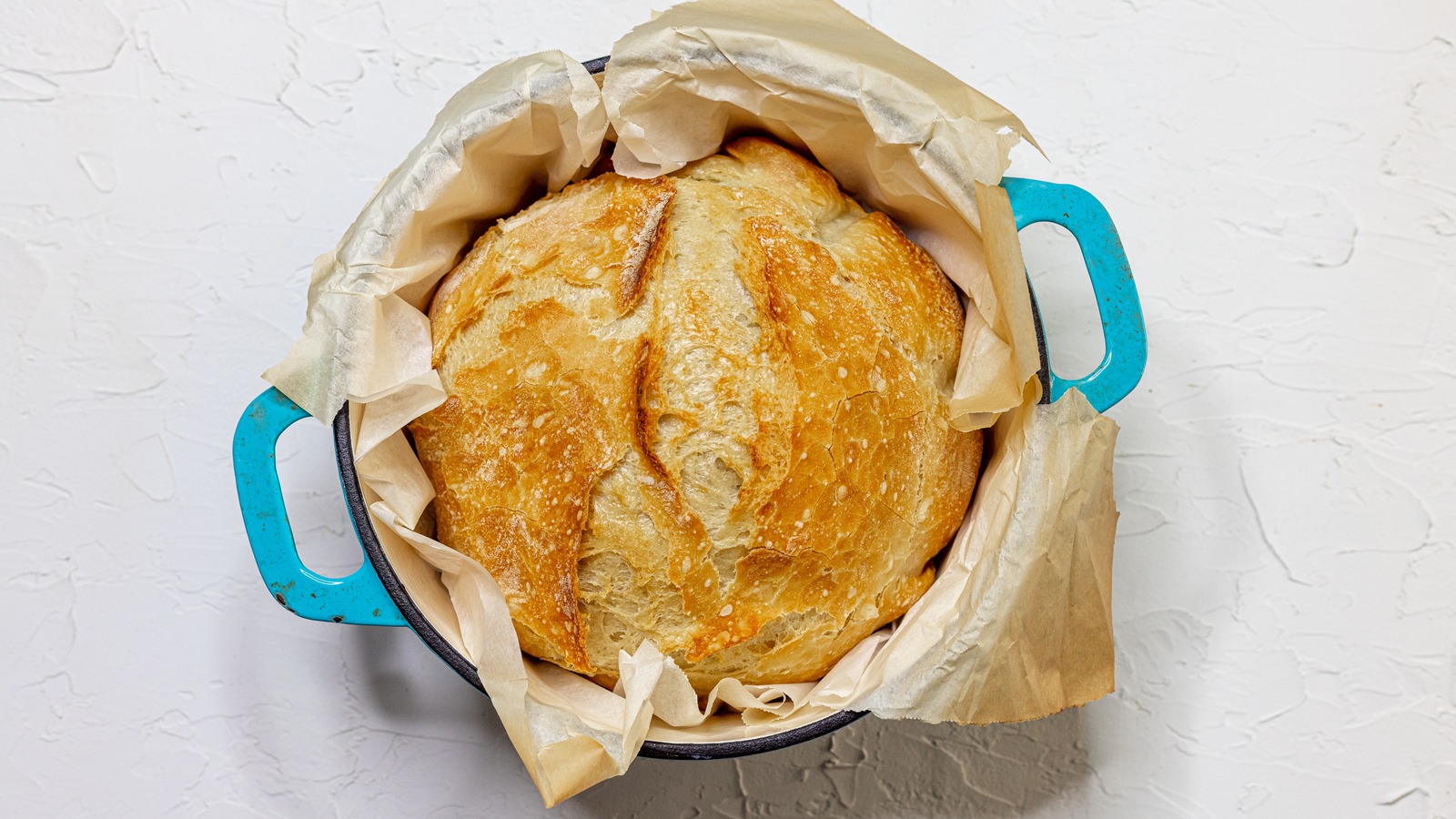
The first thing you'll notice when making no-knead bread is that it's wetter and stickier than your typical bread dough. A high level of hydration is key for a few reasons. Firstly, MasterClass points out that the union of water and flour is what forms gluten strands, to begin with. More water in the dough produces a more "open crumb" — in other words, a light loaf with lots of air bubbles (via King Arthur Baking). The moisture content is especially important for no-knead bread because gluten molecules are more mobile in a wetter environment, so they can easily move into alignment, per The New York Times.
The second element of no-knead bread is time. As The New York Times points out, once gluten strands have formed, they will naturally align on their own to form strong networks and therefore airy loaves. It takes a long time — about 18 hours — for this to happen. Kneading speeds up the process, but if you aren't in a hurry, you can bypass it (and if you are in a hurry, what are you doing making bread in the first place?). However, King Arthur Baking is quick to point out that this principle does not work for every style of bread. Certain loaves, like challah, need a sturdier dough for shaping, but when convenience comes first, it doesn't get better than a no-knead loaf.
"bread" - Google News
August 27, 2022 at 02:02AM
https://ift.tt/KntmJGS
How No-Knead Bread Dough Actually Works - Tasting Table
"bread" - Google News
https://ift.tt/7eZc1Ah
https://ift.tt/tHaC8LF
Bagikan Berita Ini















0 Response to "How No-Knead Bread Dough Actually Works - Tasting Table"
Post a Comment